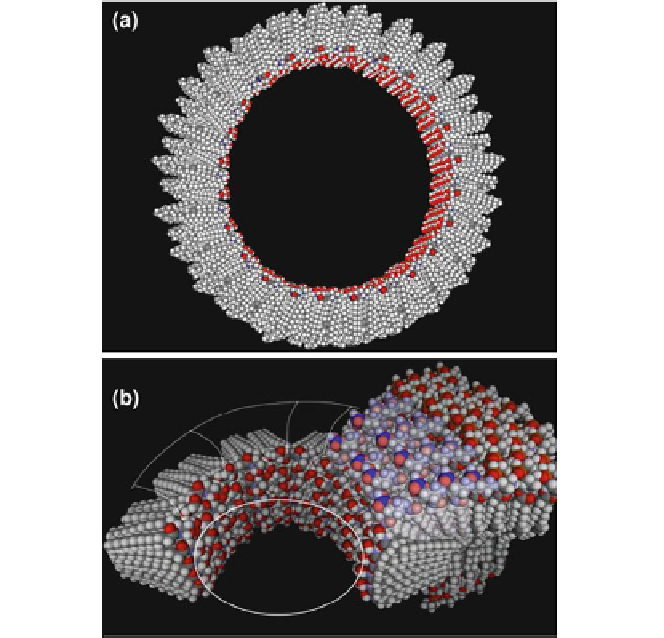Biomedical Engineering Reference
In-Depth Information
Fig. 4.6
These model diagrams of the C16-ceramides in membranes (ceramide channel) were
provided by Professor Marco Colombini, and were previously published in [
43
]. In addition to
this paper, earlier papers of the group, (e.g. [
48
]) also provide details of the ceramide channel
phenomena in lipid membranes.
a
The channel is slightly tilted to illustrate the columns that span
the membrane, each consisting of six ceramide monomers. The pore is lined by hydroxyl groups.
The hydrocarbon tails are oriented parallel to the plane of the membrane. The columns are arranged
in an antiparallel fashion, so that the carbonyl oxygen of the amide linkage (
red
) is only visible in
every other column. The pore diameter of this 48-column channel is 10 nm.
b
A model of a segment
of a smaller ceramide channel, showing how it might interface with the phospholipid membrane.
Note the slightly hourglass shape of the pore, and the distorted phospholipids (
lighter colors
)that
cover the hydrocarbon chains of the ceramides at the end of the channel. The structure of this
interface is an illustration of the results reported from molecular dynamic simulations by the same
group [
3
]. This figure and its caption has been taken with the publisher's permission from [
43
]
4.4 Defects in Membranes
In Sects.
4.1
-
4.3
we have discussed how membranes can be forced to compromise
with the lipid-created bilayer's electrical insulating properties, by inducing some
complexes of the participating antimicrobial peptides, lipids, specific biomolecules,
etc. In all of these cases, the structure of the complexes, together with the lipids in

Search WWH ::

Custom Search